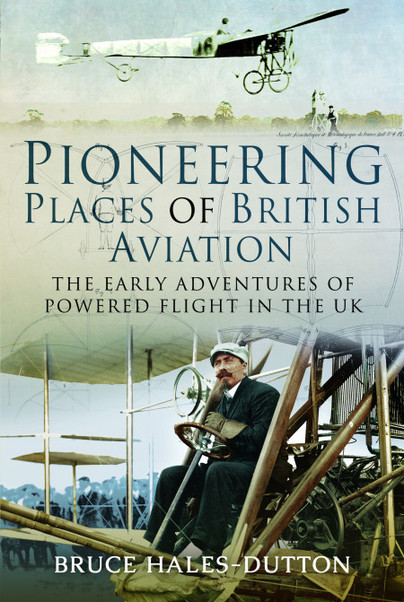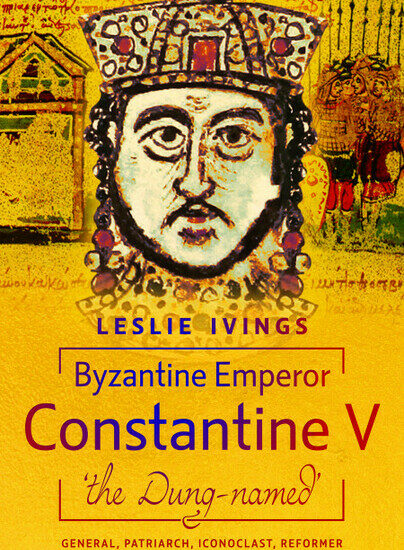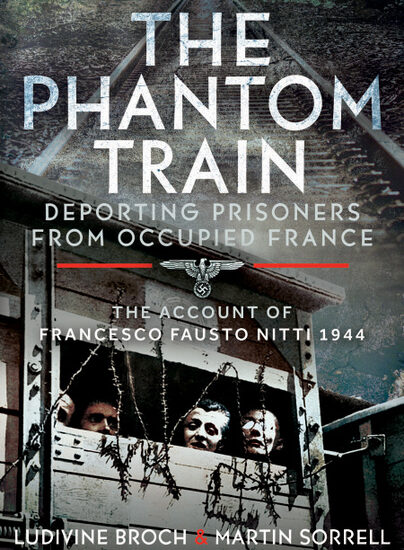Guest Post: Bruce Hales-Dutton
WHO WAS BRITAIN’S FIRST PILOT?
Who was the first to fly aeroplane in Britain? Was it a) Samuel Franklin Cody, b) Alliott Verdon Roe or c) John Moore-Brabazon?
Actually, it was all three of them. It’s all a matter of definitions, you see.

Cody was the first man, irrespective of nationality, to make a controlled and sustained flight in Britain. Moore-Brabazon was the first Briton to do so, while Roe was the first Brit to fly a British-built aeroplane.
Something for everybody, you might say, except that even to this day over a century later the supporters of Roe still insist their man was number one Brit.
This story is told in my book, Pioneering Places of British Aviation published by Frontline Books, an imprint of Pen and Sword. In fact, my research uncovered many other intriguing questions from the earliest days of British aviation.
Where, for example, was Britain’s first aircraft factory; and what were the Wright Brothers doing visiting a Kentish farmhouse in 1909?
I discovered that Roe’s illegible handwriting was at least partly to blame for an argument which took two decades to settle and even then not to everybody’s satisfaction
In 1908 Samuel Franklin Cody, Roe and Moore-Brabazon were inching their way towards immortality with their experiments into powered flight. Although working independently, Cody had support from the British Army, while Roe and Moore-Brabazon had to draw on their own or family resources.
Roe was busy at Brooklands racetrack and regularly reporting his progress in a series of letters to Major Baden Baden-Powell, brother of the founder of the Scout Movement, from whom he was seeking sponsorship.
On 8 July 1908, before anybody had flown in Britain, Roe told Baden-Powell “I have made several towed flights rising six feet or so towed by motor cars and have nearly left the ground with present engine…..”
And it was that word “nearly” which began an argument which still is going on. It is possible that Roe, who was a prodigious letter writer, was in a hurry when he dashed off this missive. In any case, the result was that for many years, his supporters misread the word “nearly” as “already.”
Even today Roe’s grandson remains convinced that he made Britain’s first aeroplane flight from the banked track at Brooklands. And the museum, which now occupies part of the site, insists that Brooklands is the birthplace of British motor racing and aviation on the basis of Roe’s activities.
Roe, the son of a Manchester doctor, went on to establish the famous aircraft company named after him. From its earliest years, Avro’s PR department made much of the claim that that Roe was the nation’s number one aviator.
But supporters of balloonist and racing driver John Moore-Brabazon were equally insistent that he had made the first flight in Britain by a British pilot and that he’d achieved this feat near the village of Eastchurch on the Isle of Sheppey in Kent. His machine, however, had been a French-built Voisin.
Cody was then an American citizen. Actually, his nationality was pretty much the only thing about him that rang true. Even his name was an assumed one and he called himself “Colonel” when he held no such rank. He falsely claimed kinship with Buffalo Bill Cody but although he was a crack shot and had been a trail boss on a cattle drive from Texas, he was no relation to the Wild West hero turned showman.
Yet while Cody, real name Cowdery, was something of a con man, he had acquired genuine aviation expertise through his work on man-lifting kites and lighter than air craft at Farnborough. And his courage and determination were real enough.
The pioneering days of aviation in Britain were certainly rich in characters. But this isn’t just a story about people. The places with which they’ve become associated have their own distinct characters: Farnborough, steeped in aviation history and the repository of so much knowledge; Brooklands, the Surrey speed bowl which was a magnet for many of the earliest flyers almost from the time it opened in 1907; and the Isle of Sheppey, once the location of a naval dockyard and a wartime RAF station which still treasures memories of its time as a cradle of British aviation.
Although his activities at Brooklands were not to be crowned with success, Roe’s persistence was eventually rewarded. Banished from the track by an unsympathetic clerk of the course who objected to his habit of removing sections of fencing to create access for his flying machines, Roe moved to the eastern edge of London. By now his efforts were focussed on a triplane rather than the earlier cumbersome biplane.
He operated from a railway arch which now carries the line from Liverpool Street to Chingford. It was at Lea (or Lee) Marshes in July 1909 that he became the first Briton to fly a British-built aeroplane.
Meanwhile, the Aero Club (the Royal prefix was added in 1910) had moved its operations to the Isle of Sheppey. This flat, featureless area, reasonably accessible from London by train yet remote from prying eyes, was considered to be the ideal flying ground.
Separated from the Kentish mainland by a narrow channel of water known as The Swale, Sheppey was the only part of mainland Britain to be occupied by a foreign power since the Norman invasion of 1066. Following the devastating raid on the English fleet at Chatham in June 1667, the Dutch briefly occupied the town of Sheerness.
Later Samuel Pepys, secretary to the navy, initiated the construction of a naval dockyard there. Today it’s the more recent past which lingers in the island’s memories together with some of the original buildings occupied by Moore-Brabazon and his chums, who included the Hon Charles Rolls. Yes, that Rolls.
In May 1909 Moore-Brabazon and his Voisin biplane, which he called Bird of Passage, made the flight which came to be recognised as the first in Britain by a British pilot, beating Roe by several months. Later, Moore-Brabazon used a machine built by the Short Brothers to complete the first circular mile flown in Britain and to win himself a substantial cash prize.
Yet the question of who was the first Brit to fly remained open. To settle matters once and for all, the Royal Aero Club convened a committee of inquiry chaired by former aviation minister Lord Gorell. After hearing from witnesses for both aviators the committee found in Moore-Brabazon’s favour in 1929.
By that time, Moore-Brabazon had quit flying following the fatal crash at a flying display at Bournemouth in 1910 of Charles Rolls, who had just become the first aeroplane pilot to make a double crossing of the English Channel. Brabazon later became a Conservative MP and minister for aircraft production in Churchill’s War Cabinet in succession to the energetic Lord Beaverbrook.
Brabazon was himself ennobled following his sacking by Churchill for making derogatory comments about the Soviets who had just become Britain’s allies in the struggle against Nazi Germany.
For all his deceptions, though, no-one doubted Cody’s claim to have been the first man to fly an aeroplane in Britain. In fact, he would become something of a national hero and there was an outpouring of public grief when he crashed to his death in 1913 by which time he’d taken British citizenship. He was buried with full military honours and thousands turned out to pay their respects to the man from Iowa with the big hat and personality to match.
In May 1909, a few days after his historic flight, Moore-Brabazon together with Rolls and other notable pioneer aviators joined the three Short brothers to welcome Wilbur and Orville Wright to the Isle of Sheppey. Rolls had driven the Wrights down from London in – what else? – a Rolls Royce Silver Ghost. They had negotiated a deal for the Shorts to build copies of the Wright Flyer under licence.
The highlight of the visit to Kent was a group photograph outside Mussel Manor, a 16th century farmhouse which the Royal Aero Club had adopted as its club house. This photograph, surely one of the most evocative group shots in aviation history, represented something of a scoop for the Flight photographer who had been present to record the occasion.
Since then Mussel Manor has been renamed Muswell Manor, a bed and breakfast business with a bar and reception facilities for the adjoining caravan park. The house itself contains a collection of relevant documents and artefacts.
There is also a plaque commemorating the May 1909 meeting. Between the manor and the beach stands a statute of the three Short Brothers, arms outstretched, their backs to the sea.
Eustace and Oswald, the two younger Short brothers, had started manufacturing balloons in 1907. They occupied two of the railway arches under the London-Brighton Line at Battersea in south-east London. This is accepted as Britain’s first aircraft factory. Clients included Moore-Brabazon and Charles Rolls.
When the brothers decided the future lay with heavier-than-air machines, they were joined by their older brother, Horace. An accomplished engineer with a razor-sharp intellect, Horace had an abnormally large head the legacy of meningitis contracted during childhood. He was not above using this abnormality to intimidate people when he thought the occasion warranted it.
Until his death in 1917, Horace provided the driving force of the aircraft manufacturing company formed by the three brothers. After sealing the deal with the Wrights, the Shorts realised that their Battersea premises weren’t big enough to turn out aircraft on the scale envisaged by the agreement. Sheds were erected near Eastchurch by a company from Bermondsey, south-east London which specialised in putting up iron-framed church halls and the like.
Later still the Shorts they moved from Sheppey to new and bigger premises fronting the River Medway at Rochester. There they built a succession of flying boats and seaplanes which made their first flights from the river.
At first the pioneer aviators of the Aero Club established themselves at Shellbeach adjacent to Muswell Manor but as the length of flights increased the area revealed its restricted nature due to the presence of drainage ditches. “Eventually,” says Elizabeth Walker, the Short Brothers’ great niece, “the flying gentry moved to Stone Pitts Farm at Eastchurch and the Short factory very soon followed, in 1910.”
She adds: “I’m immensely proud of the Short Brothers whose spirit, determination, innovations and achievements made unique and very important contributions to the future of aviation. Even today [they] remain largely unrecognised.”
With their selection of the Battersea railway arches the Short Brothers had a set a trend. For a brief while, Battersea was the centre of aircraft manufacture in Britain. It even had its own Wright Brothers.
Howard and Warwick Wright came from the West Midlands and translated their interest in aviation into a business manufacturing aircraft designed by Howard. They also occupied Battersea railway arches. Their business partnership was dissolved in 1911 and while Howard continued with the manufacture of aircraft, Warwick returned to cars which had been his first love.
An offshoot of the firm of Mulliners, better known for building bespoke bodies for luxury cars like Rolls-Royce, briefly occupied a disused skating rink at Battersea as Mulliners Aerocraft. It’s not clear how many aeroplanes were actually built there but the Mulliner Monoplane was praised by Flight for its high-standard of finish and light weight.
When Mulliners moved out, Hewlett and Blondeau moved in. Hilda Hewlett was the first woman in the UK to receive a Royal Aero Club pilot licence after completing the test at Brooklands. In 1909, she’d attended the aviation meeting at Blackpool, one of the first in Britain and the same year met French engineer, Gustave Blondeau.
The Hewlett and Blondeau school, established in September 1910, was one of many established at Brooklands. They provided many aviators, including Thomas Sopwith, with their first experience of flying, although flights often ended in the sewage works which lurked to trap the unwary or the unskilled into what was virtually a malodourous rite of passage.
When Hewlett and Blondeau decided to manufacture aircraft, they leased the former Mulliner factory in Battersea which they called the Omnia Works. There they built Farman, Caudron and Hanriot machines under licence. In June 1914 they moved to a bigger site in Bedfordshire and contributed over 800 aircraft to the war effort.
Meanwhile, Farnborough was well on its way from being the location of the Army’s Balloon Factory, then the Royal Aircraft Factory and more recently, the Royal Aircraft Establishment. Today it is a business aircraft centre but still the location of the world-famous air show.
Little, though, remains of the famous banked track at Brooklands which is now shared between a German car manufacturer, a Japanese tobacco company and a branch of Tesco. But the old buildings once associated with the racetrack in its glory days form the nucleus of the Brooklands Museum. Ironically, little now remains of the aircraft factories which like, a cuckoo in the nest, outgrew and overwhelmed the host location. The racetrack closed in 1939 but up to the 1980s around 19,000 aircraft were built there.
On the Isle of Sheppey, the dockyard and the RAF station have long since shut down but the area still remains a popular holiday resort despite the presence at Eastchurch of three prisons. But there are plenty of reminders of a rich aviation heritage including a museum which is to be found at HMP Standford Hill.
Farnborough, Brooklands, Sheppey: they’re far from being the only sites associated with early aviation in Britain. Find out about the others in Pioneering Places of British Aviation.

You can order a copy here.

